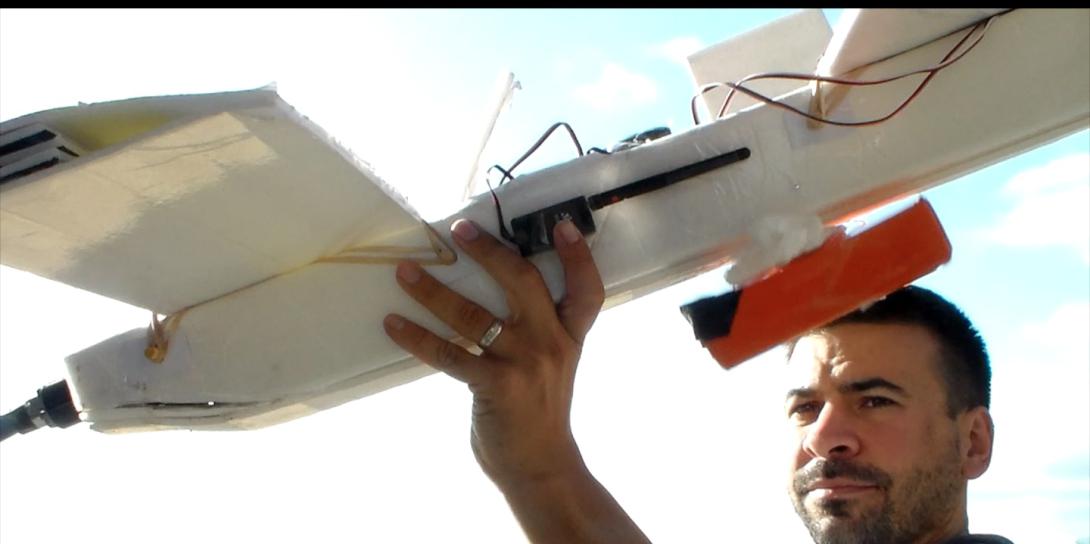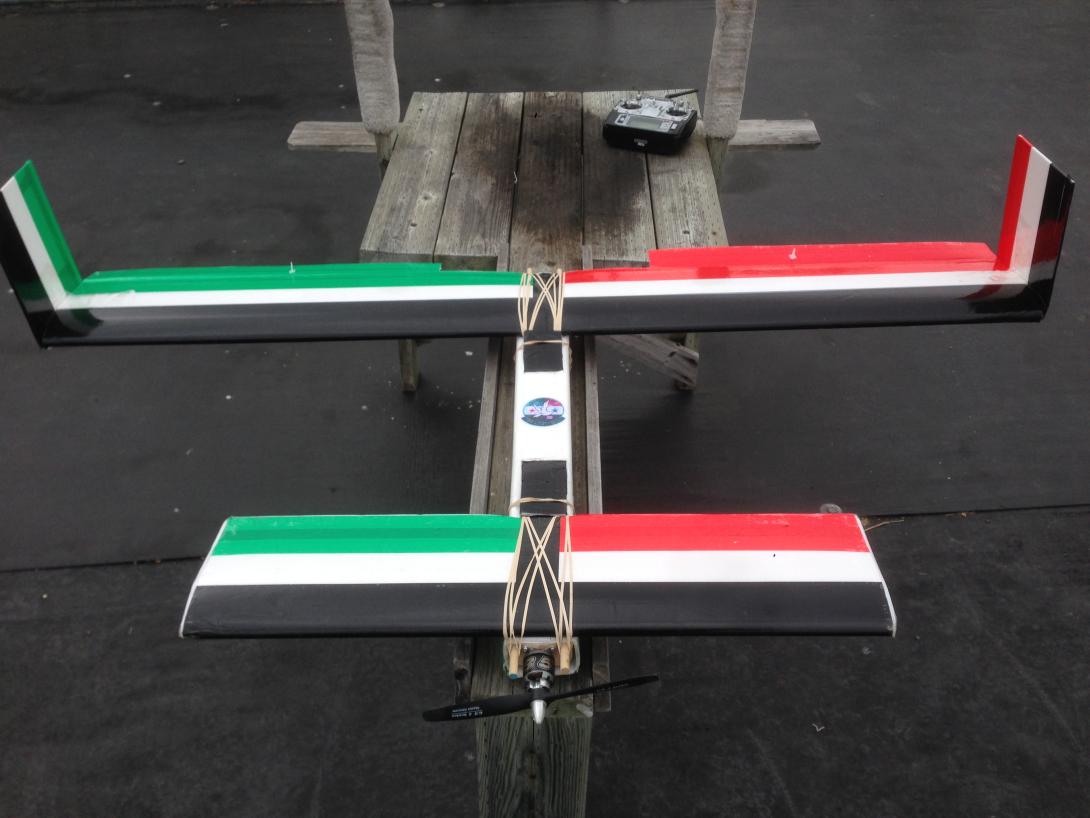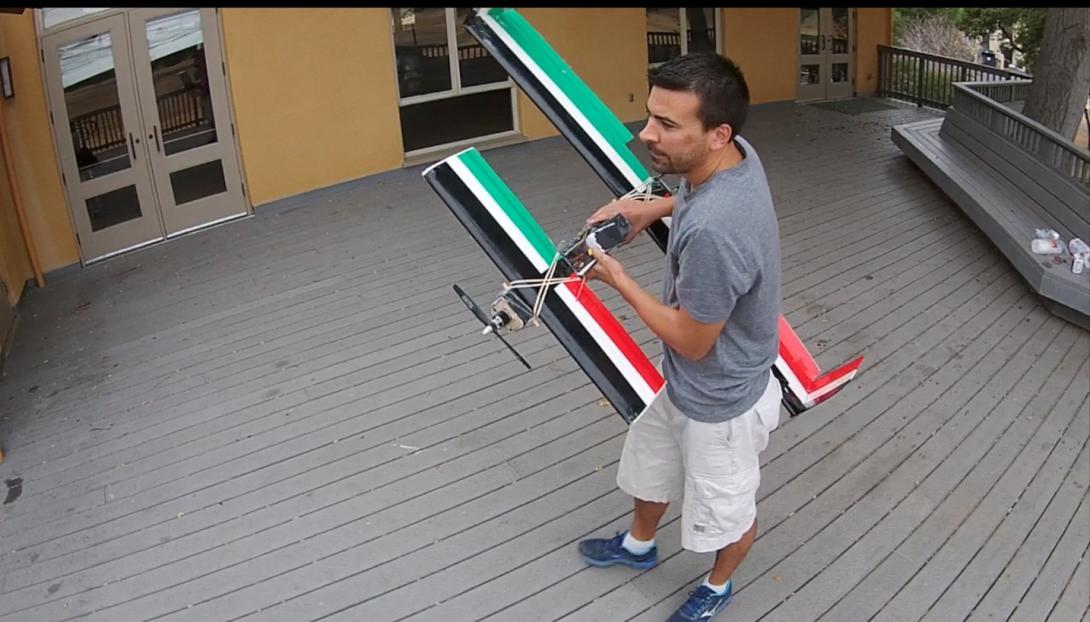Drone Airlift Project Could Drop Food, Medicine to War Refugees
After witnessing the depressing impact of starvation and lack of medicine for Syrian refugees encamped in Turkey, Maj. Mark Jacobsen, USAF, embarked on a project that he hopes one day will use unmanned aerial vehicles to airdop lifesaving supplies for victims of war-ravaged nations.
What if inexpensive, lightweight, easy-to-use drones could deliver food and medicine to war-ravaged refugees?
Maj. Mark Jacobsen, USAF, intends to answer that.
His tale begins in March, when he witnessed the dismal impact of the deprivation of food and medicine on Syrian refugees who had fled their homes and civil strife to encamp in Turkey. “People were asking me, as a cargo pilot, why wasn’t the Air Force doing anything. Did nobody care? Why can’t we just airdrop food to these places?” says the C-17 pilot. “And I gave the answer that most airlift pilots would, but you just can’t fly big airplanes to these places without permission. They might get shot down. You really need a major military operation to take down air defenses,” says Jacobsen, who at the time was a student at the U.S. Air Force School of Advanced Air and Space Studies.
“But as I was seeing all of this suffering firsthand of the Syrian refugees, hearing their stories, I could not stop thinking about this and I thought, ‘Surely, in the 21st century, there has to be a way that you could get food and medicine to these besieged areas.’”
If they couldn’t get in big airplanes, what about a lot of small planes?
“The more I thought about it, the more viable it seemed,” says Jacobsen, whose thesis concentrated on the fragmentation of warring groups in Syria and how strategists might make sense of similar conflicts. A travel program sponsored by George Mason University’s Center for World Religions, Diplomacy and Conflict Resolution related to his thesis and the school let him travel to Turkey.
He also is a former scholar of the George and Carol Olmstead Foundation, which provides junior officers opportunities to live abroad and study at graduate-level foreign universities in 57 countries. Jacobsen, a Middle East specialist, and his wife lived in Jordan for two years, where he perfected his Arabic.
After his return home to the United States, he started the Syria Airlift Project, a mammoth effort that aims to end the use of starvation and deprivation of medicine as weapons of war, says Jacobsen, 34.
He began testing small, unmanned aerial vehicles and software, learning about the technology and the limitations—while also starting a doctoral program in political science at Stanford University.
It wasn’t until he attended the national Defense Entrepreneurs Forum (DEF) in Chicago—and won the forum’s contest (and $5,000 seed money)—that the project began to garner a lot of attention.
Getting the right technology presents the biggest challenge at the moment, he says. He and his team now are testing with a type of foam readily and inexpensively available at hobby shops and easily poured into molds. “But it is limited in how much weight it can carry. So right now, we’re working on a short-range airplane. Our goal is to carry 1 kilogram 15 miles, airdrop it and fly home. But we’re also looking at a longer range one that can carry a bit more weight, and for that one, we’re looking at composite. … At one point, we were looking at trying to build airplanes out of food, so the whole thing could be flown in, disassembled and eaten.” His wife, Wendy, even baked a wing out of granola, but the design proved too heavy. “We’re still searching for the right design.”
The “we” primarily refers to Brandon Fetroe, a mechanical engineer with aerospace engineering background and Jacobsen's lead aircraft engineer, and Jessie Mooberry, who runs nonprofits and has experience with organizational management.
He met Mooberry at the DEF, an independent group of emerging defense leaders tasked with solving national security problems. Attendees are lower enlisted and junior officer levels to higher echelons of leadership, brought together through the Internet and conference settings to share cutting-edge ideas and engage in cross-cultural networking opportunities, explains co-founder and chairman Benjamin Kohlmann. “I really wanted to give an opportunity to young innovators to really pitch their ideas to a very distinguished panel of judges and also have some incentive on the backside,” he says, referring to the cash prize.
Attendees to the Chicago conference, capped at 150 participants, for the most part pay their own way. “They are putting skin in the game,” Kohlmann says. “They are saying ‘I’m committed to this,’ and only those who are willing to put that down are going to come.” Scholarships are available as well.
“Before DEF, there were a lot of individual innovators within units, and they felt isolated,” Kohlmann says. “You’d have a creative guy in an Air Force squadron, and somebody on a Navy submarine, and another guy in an Army outpost … and he or she was the only person to have a crazy idea and really not much support. What we were able to do was to link those people up. They finally had a community where they felt comfortable talking, and they also realized they were not alone. There are others who think like them.”
Participation provides the advantage and opportunity for networking, which is how Jacobsen began to grow his endeavor. He hopes to tap experts who might aid with solving distribution challenges.
“We don’t want our planes to land because we don’t want people to capture them or [for them to] get shot down,” he explains. “So that means they have to airdrop cargo from altitudes using parachutes. Now you’ve got a challenge of making sure the right people on the ground get it. This has traditionally been a problem with big NGOs that have tried airdropping from big aircraft. If you’re airdropping an entire pallet, you run the risk of crushing people, the risk of riots.”
Once he gets the technology and distribution figured out, he’ll work on the logistics, including securing proper permissions to fly the humanitarian UAV missions.
“We’ll start working on getting the right legal permissions, which is obviously a very complicated legal thing. … If we get permissions, we could conceivably start doing deliveries in the summer.”







Comment
It sounds fun and all on
It sounds fun and all on theory, in practice when you send out a drone to war refugees, you can bet 1000 bucks it will get shot down before reaching its destination.
Comments